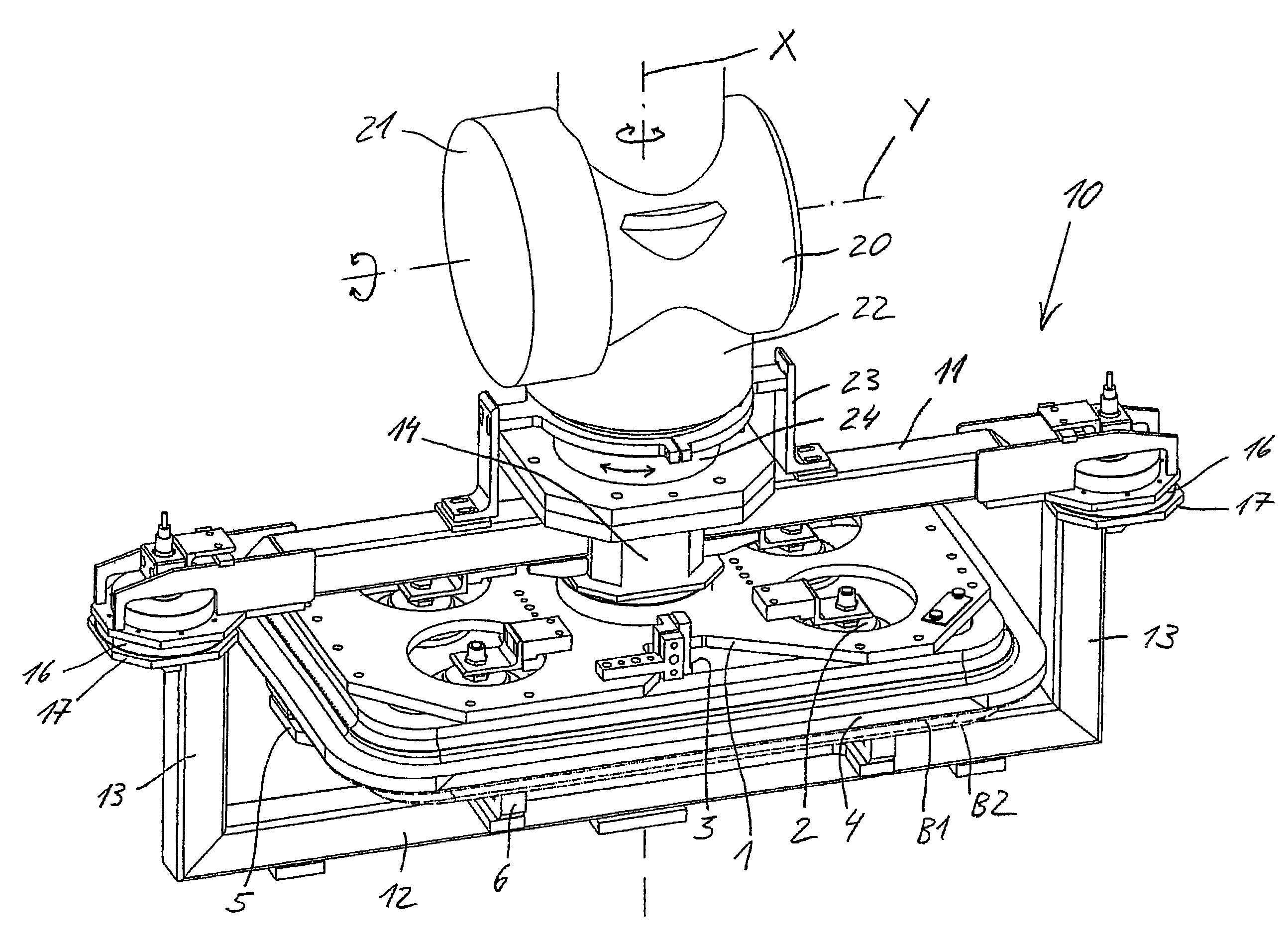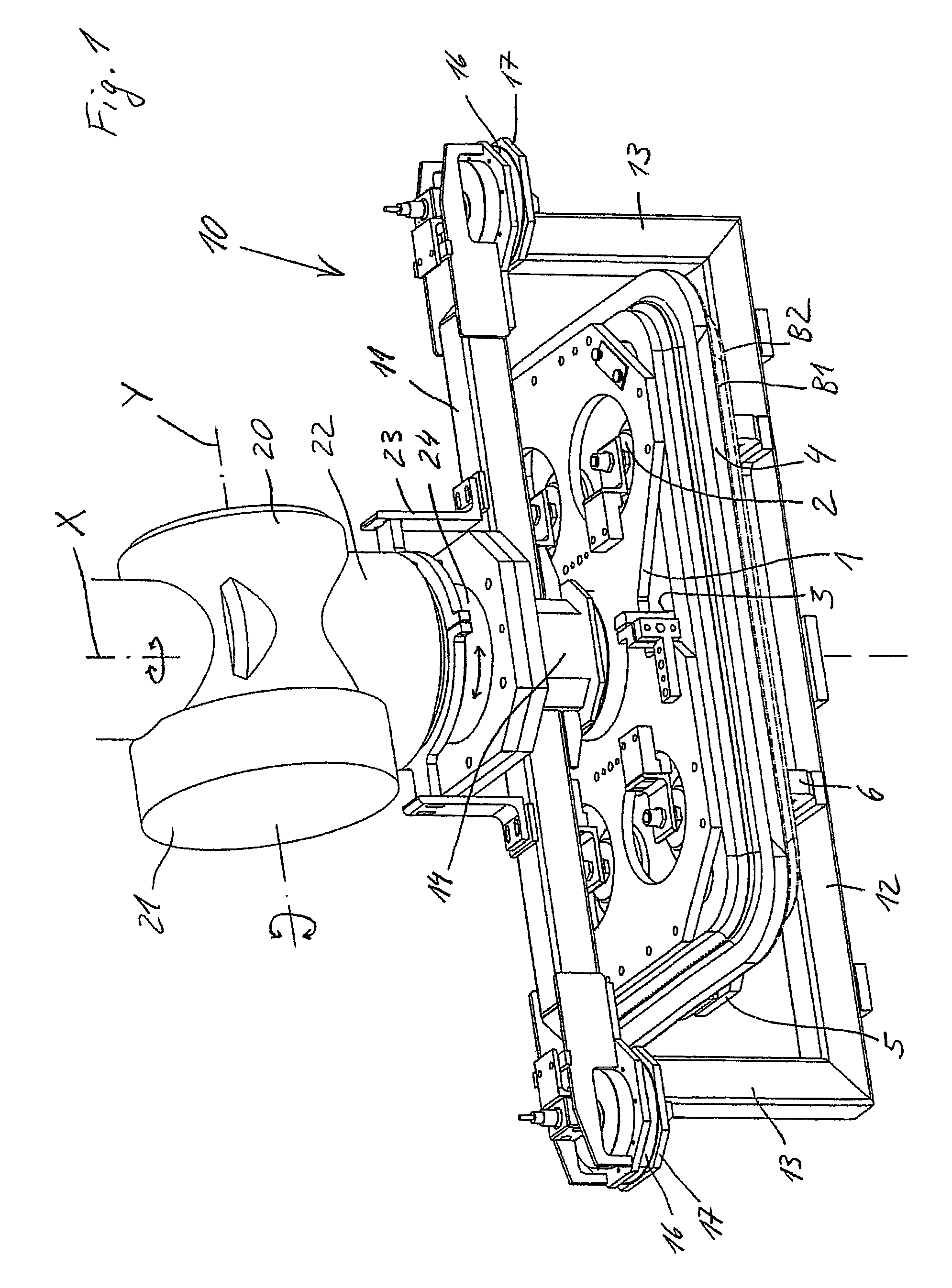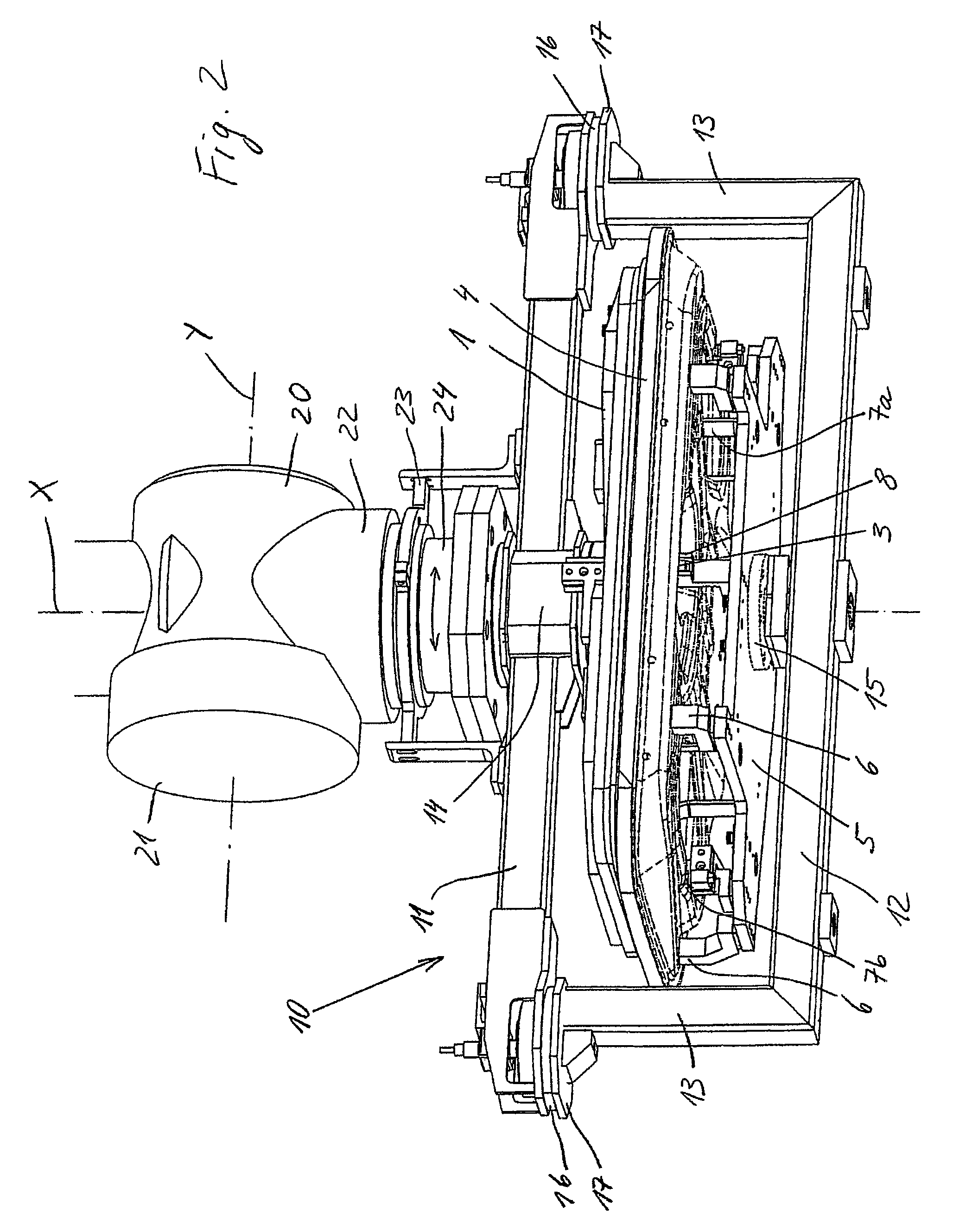Clamping device for holding and clamping components
a technology for clamping components and clamping devices, which is applied in the direction of metal-working feeding devices, auxillary welding devices, soldering devices, etc., can solve the problems that the clamping device generally hampers the access to components, and achieve the effect of avoiding the disruption of contours
- Summary
- Abstract
- Description
- Claims
- Application Information
AI Technical Summary
Benefits of technology
Problems solved by technology
Method used
Image
Examples
Embodiment Construction
[0035]FIG. 1 illustrates a clamping device of the type used by preference for a flying joining process, in particular roller hemming, based on an example of a first embodiment. The clamping device is used to clamp two components B1 and B2 to be fixedly joined to one another along their outer peripheral edge to form a joined unit after the joining process. The clamping device clamps the components B1 and B2 relative to one another in a joining position which they also assume after the joining process. In the clamped state, the components B1 and B2 are joined along their outer peripheral edge, preferably by roller hemming. A single joining tool effects a complete revolution in order to produce the join. Alternatively, several tools may be distributed along the outer peripheral edge, each of which joins only a part-portion of the peripheral edge. During the preferred joining process based on roller hemming, several tool heads with hemming rollers set at differing angles of inclination ...
PUM
| Property | Measurement | Unit |
|---|---|---|
| electric power | aaaaa | aaaaa |
| degree of freedom | aaaaa | aaaaa |
| thickness | aaaaa | aaaaa |
Abstract
Description
Claims
Application Information
 Login to View More
Login to View More - R&D
- Intellectual Property
- Life Sciences
- Materials
- Tech Scout
- Unparalleled Data Quality
- Higher Quality Content
- 60% Fewer Hallucinations
Browse by: Latest US Patents, China's latest patents, Technical Efficacy Thesaurus, Application Domain, Technology Topic, Popular Technical Reports.
© 2025 PatSnap. All rights reserved.Legal|Privacy policy|Modern Slavery Act Transparency Statement|Sitemap|About US| Contact US: help@patsnap.com



